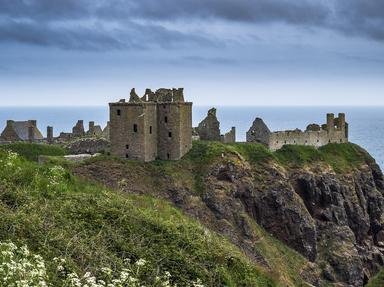Quiz Answer Key and Fun Facts
1. Largest Scottish island. Ancestral homeland of the Highland Clan Macleod. Famous for its tweed.
2. Largest and northernmost of the Inner Hebrides. Home of Dunvegan Castle. Linked to mainland Scotland by a bridge over Loch Alsh.
3. Sits within the Firth of Clyde. Home of the ruined Rothesay Castle. Famous for Scalpsie Bay and its colony of seals.
4. Neolithic village Skara Brae was discovered here. Contains the towns of Kirkwall and Stromness.
5. Largest island in the Firth of Clyde. Home of the "King's Cave" and Brodick Castle. Often mistakenly associated with a form of knitting.
6. Main settlement is Tobermory. Home of Duart Castle and the stone circle at Lochbuie. Setting for part of Robert Louis Stevenson's "Kidnapped" novel.
7. The "Queen of the Hebrides". Particularly famous for its prolific malt whiskey distillation. Both the SS Tuscania and the HMS Otranto were shipwrecked here during World War 1.
8. Sits in the Outer Hebrides. Connected to the island of Vatersay by a causeway. Home of Kisimul Castle, home of the Clan MacNeill, Lairds of the island, between 1427 and 1838.
9. Home of the oldest known rocks in the British Isles. Testing place for Britain and America's first guided nuclear missile. Birthplace of Flora MacDonald, saviour of Bonnie Prince Charlie.
10. Very sparsely populated Inner Hebrides island. Known for its white, sandy beaches and sand dunes. Home of Breacachadh Castle and colonies of rare corncrakes.
Source: Author
suzidunc
This quiz was reviewed by FunTrivia editor
agony before going online.
Any errors found in FunTrivia content are routinely corrected through our feedback system.
